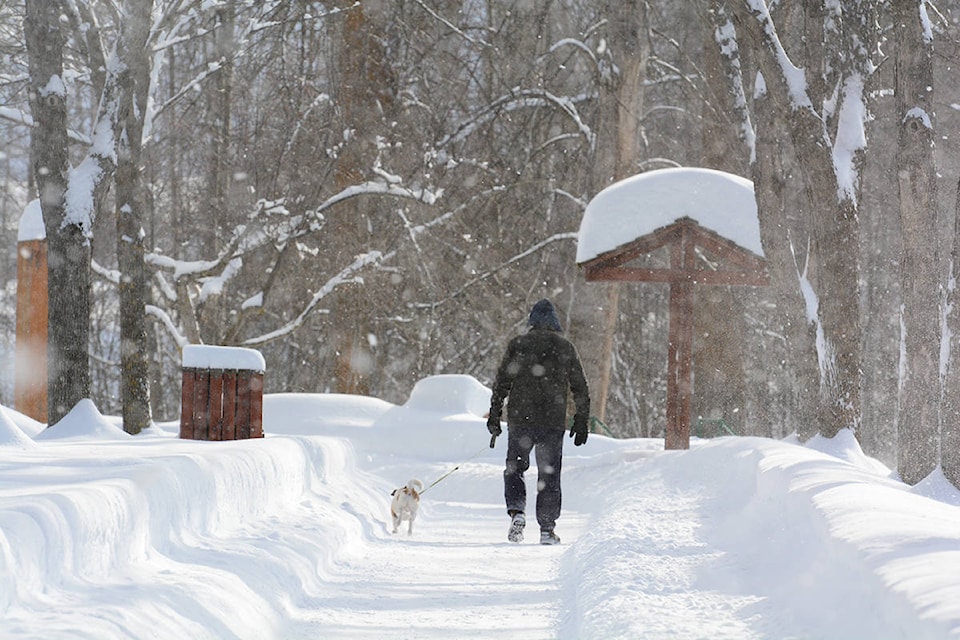Residents in several British Columbia communities are being warned to prepare the sandbags and to remember social distancing measures if they’re helping their neighbours protect property from potential flooding.
Jonathan Boyd, a hydrologist with the B.C. River Forecast Centre, said Friday Prince George and the surrounding region are most at risk of flooding from upstream snowpacks that are near record levels.
One snow station that goes back 61 years was at its highest level ever when the latest measurements were taken on April 1, he said.
“The worst-case scenario, and it’s pretty well for any part of the province that’s susceptible to snow-melt flooding, is that if we have a cold April or even early May, so that’s a lack of snowmelt, and then we switch to extraordinary heat so in Prince George that would be 25 degrees over five to 10 days,” he said.
“That would result in a rapid melt of the snow all at once. And then an extra worse-case scenario would be having the rain fall on top of that.”
Quesnel and Grand Forks are among the communities that could be most impacted due to rapid snowmelt in Prince George.
Catastrophic flooding in parts of southern B.C. in the spring of 2018 forced nearly 2,800 people to flee, with Grand Forks hit particularly hard as homes were submerged in murky, brown water.
Two days of intense rain in May that year caused the worst flooding seen in 70 years.
READ MORE: Largest April snowpack in decades poses high flood risk to Fraser Valley
Kamloops is also at high risk of flooding because of the highest water levels since 1999 in the north and south parts of the Thompson River combined, Boyd said.
The regions of Kamloops, Prince George and Quesnel make up about 65 per cent of the water that eventually comes down through the lower Fraser Valley and any flooding above could affect Delta and Richmond, he said.
“The absolute worst-case scenario would have to occur but the snowpack is very high for the Fraser River,” he said of the largest river in the province.
The snowpack on April 1, 2018 was 127 per cent of normal and this year it’s 112 per cent, Boyd said.
“However, the areas of key concern this year are a lot higher than that year.”
Chris Keam, spokesman for the Cariboo Regional District, said water levels are rising in some areas and any widespread evacuations would cause challenges in housing people due to physical distancing measures during the pandemic.
“It’s getting warm up here and it’s raining today,” Keam said, adding free sandbags and sand are available at four fire halls in the region.
“We’re hoping that people can be prepared and ready to protect their property and have a plan if they need to leave,” he said.
The City of Kamloops is providing sand at two sites but residents are required to bring their own shovels and stay at least two metres apart while filling sandbags.
Camille Bains, The Canadian Press
